Peugeot 308 vs Renault Symbioz – Differences & prices compared
Compare performance, boot capacity, efficiency and price at a glance.
Find out which car is the better choice for you – Peugeot 308 or Renault Symbioz?
The Ultimate Showdown: Peugeot 308 vs Renault Symbioz
In an automotive world driven by innovation and efficiency, the competition between Peugeot and Renault heats up with their latest models. The Peugeot 308 and Renault Symbioz stand as remarkable examples of cutting-edge engineering and design in the modern car market. Each vehicle brings unique attributes to the table, promising comfort, performance, and eco-friendliness in their respective categories. Let's explore how these two contenders stack up against each other.
Design and Dimensions
The Peugeot 308, a sleek hatchback, measures 4367 mm in length, 1852 mm in width, and 1441 mm in height. Its bold design embodies a modern edge, focusing on aerodynamics and style. Meanwhile, the Renault Symbioz, a futuristic SUV, stands taller with a height of 1575 mm. It presents a longer and slightly narrower profile at 4413 mm in length and 1797 mm in width, underscoring its elegance and presence on the road.
Power and Performance
Under the hood, the Peugeot 308 offers diverse engine options, ranging from petrol variants to a full electric version. With power outputs between 130 HP and 225 HP, it can reach a maximum speed of up to 235 km/h. The 308's acceleration time varies, with the most efficient model launching from 0 to 100 km/h in just 7.5 seconds for the electric version.
In contrast, the Renault Symbioz, featuring a full hybrid engine, delivers 143 HP with a torque of 250 Nm. It offers more than adequate performance for urban driving at a top speed of 170 km/h, accelerating from 0 to 100 km/h in 10.6 seconds.
Efficiency and Environmental Impact
Efficiency is where these cars truly shine. The Peugeot 308 displays impressive eco-friendly credentials, particularly in its plug-in hybrid variant which runs at a consumption rate of 1.3 L/100km and registers zero CO2 emissions when in full electric mode. Depending on the model, CO2 emissions can range from 0 to 133 g/km.
The Renault Symbioz's full hybrid system promises a fuel consumption of 4.8 L/100km and CO2 emissions of 109 g/km, making it a competitive option for those seeking lower emissions without compromising on an internal combustion engine's comfort and convenience.
Interior and Practicality
Both the Peugeot 308 and Renault Symbioz cater to families and individuals looking for spacious interiors. The 308 accommodates up to five passengers with a trunk capacity of 412 liters, extending to 361 liters in some variants. Its ergonomic design and intuitive interface make it a joy to drive.
The Symbioz outmatches the 308 slightly in terms of cargo space, boasting a trunk capacity of 492 liters. With a payload capacity of 427 kg, the Symbioz combines practicality with luxury, ensuring passengers enjoy a comfortable and serene ride.
Innovation and Technology
Technological innovation abounds in both models. The Peugeot 308 integrates an array of driver-assistance features accompanying its 2024 model, enhancing both safety and driving pleasure. Its infotainment system is intuitive and adaptive to driver needs.
Renault's Symbioz, on the other hand, positions itself as a concept-influenced vehicle, laden with innovations aimed at future-proof driving. Its hybrid technology blends conventional and electric driving experiences, offering sustainability without sacrificing dynamics.
Conclusion: A Matter of Preference
Both the Peugeot 308 and Renault Symbioz offer compelling advantages, defined by their respective market positions as a hatchback and an SUV. The 308 provides varied powertrain options and slightly better performance metrics for those interested in speed and variety. The Symbioz delivers cutting-edge hybrid technology in a spacious SUV body for an immersive and eco-friendly driving experience. Ultimately, the choice between these two vehicles depends on personal needs and lifestyle preferences.
Here’s where it gets real: The technical differences in detail
Costs and Efficiency: Price and efficiency are often the first things buyers look at. Here it becomes clear which model has the long-term edge – whether at the pump, the plug, or in purchase price.
Renault Symbioz has a slightly advantage in terms of price – it starts at 24400 £, while the Peugeot 308 costs 29200 £. That’s a price difference of around 4809 £.
Fuel consumption also shows a difference: the Peugeot 308 manages with 0.80 L and is therefore clearly more efficient than the Renault Symbioz with 4.50 L. The difference is about 3.70 L per 100 km.
Engine and Performance: Power, torque and acceleration say a lot about how a car feels on the road. This is where you see which model delivers more driving dynamics.
When it comes to engine power, the Peugeot 308 has a to a small extent edge – offering 195 HP compared to 158 HP. That’s roughly 37 HP more horsepower.
In acceleration from 0 to 100 km/h, the Peugeot 308 is to a small extent quicker – completing the sprint in 7.60 s, while the Renault Symbioz takes 9.10 s. That’s about 1.50 s faster.
In terms of top speed, the Peugeot 308 performs somewhat better – reaching 225 km/h, while the Renault Symbioz tops out at 180 km/h. The difference is around 45 km/h.
There’s also a difference in torque: the Peugeot 308 pulls somewhat stronger with 300 Nm compared to 265 Nm. That’s about 35 Nm difference.
Space and Everyday Use: Cabin size, boot volume and payload all play a role in everyday practicality. Here, comfort and flexibility make the difference.
Both vehicles offer seating for 5 people.
Both models weigh roughly the same – around 1436 kg.
In terms of boot space, the Renault Symbioz offers noticeable more room – 576 L compared to 412 L. That’s a difference of about 164 L.
In maximum load capacity, the Renault Symbioz performs evident better – up to 1682 L, which is about 359 L more than the Peugeot 308.
When it comes to payload, Peugeot 308 clearly perceptible takes the win – 510 kg compared to 379 kg. That’s a difference of about 131 kg.
Our conclusion: The Peugeot 308 proves to be outperforms in nearly all aspects and thus becomes our DriveDuel Champion!
Overall, Peugeot 308 is the better all-rounder in this comparison.
Peugeot 308
The Peugeot 308 presents a refined blend of style and sophistication, making it a compelling option for anyone in search of a dynamic yet practical vehicle. Its sleek design is complemented by a thoughtfully crafted interior that ensures both driver and passengers travel in comfort and elegance. Moreover, the 308 offers a responsive driving experience, combining agility with a sense of security on the road.
details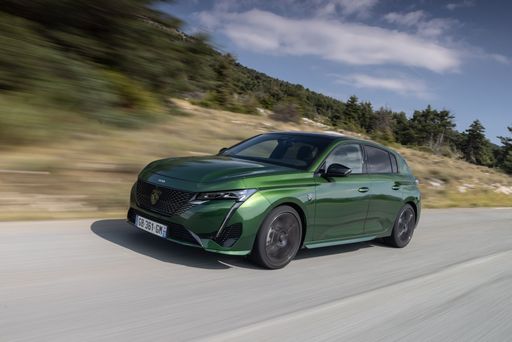 @ media.stellantis.com
@ media.stellantis.com
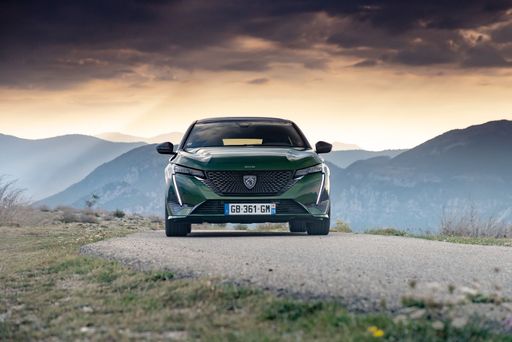 @ media.stellantis.com
@ media.stellantis.com
 @ media.stellantis.com
@ media.stellantis.com
 @ media.stellantis.com
@ media.stellantis.com
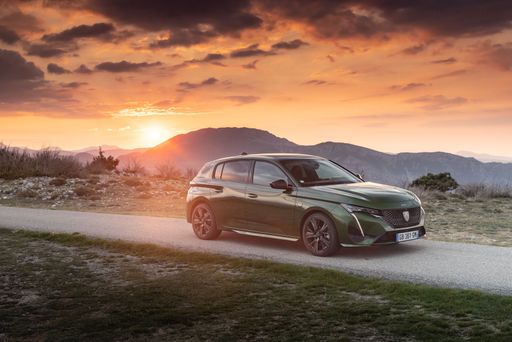 @ media.stellantis.com
@ media.stellantis.com
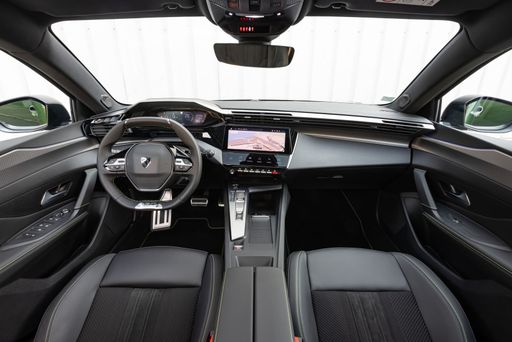 @ media.stellantis.com
@ media.stellantis.com
Renault Symbioz
The Renault Symbioz is an innovative concept car that explores the future of autonomous and connected driving. Its design seamlessly integrates indoor living space features with cutting-edge automotive technology, creating a comfortable and modern environment. The Symbioz highlights Renault's vision of an eco-friendly and connected mobility experience, paving the way for the next generation of smart vehicles.
details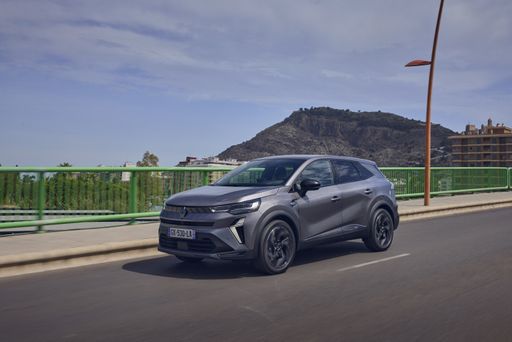 @ media.renault.at
@ media.renault.at
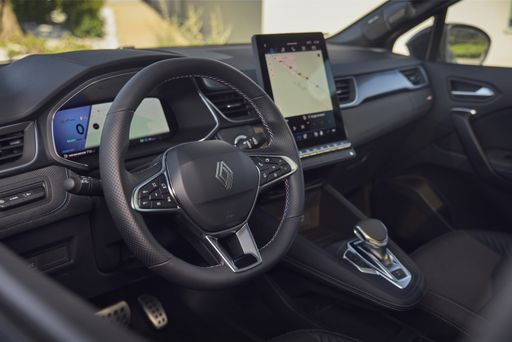 @ media.renault.at
@ media.renault.at
 @ media.renault.at
@ media.renault.at

|

|
|
|
|
Costs and Consumption |
|
|---|---|
|
Price
29200 - 41800 £
|
Price
24400 - 30700 £
|
|
Consumption L/100km
0.8 - 5.1 L
|
Consumption L/100km
4.5 - 5.9 L
|
|
Consumption kWh/100km
15.20 kWh
|
Consumption kWh/100km
-
|
|
Electric Range
78 - 419 km
|
Electric Range
-
|
|
Battery Capacity
51 kWh
|
Battery Capacity
-
|
|
co2
0 - 133 g/km
|
co2
102 - 134 g/km
|
|
Fuel tank capacity
42 - 53 L
|
Fuel tank capacity
48 L
|
Dimensions and Body |
|
|---|---|
|
Body Type
Hatchback
|
Body Type
SUV
|
|
Seats
5
|
Seats
5
|
|
Doors
5
|
Doors
5
|
|
Curb weight
1436 - 1759 kg
|
Curb weight
1436 - 1544 kg
|
|
Trunk capacity
314 - 412 L
|
Trunk capacity
492 - 576 L
|
|
Length
4367 mm
|
Length
4413 mm
|
|
Width
1852 mm
|
Width
1797 mm
|
|
Height
1441 mm
|
Height
1575 mm
|
|
Max trunk capacity
1258 - 1323 L
|
Max trunk capacity
1582 - 1682 L
|
|
Payload
431 - 510 kg
|
Payload
376 - 379 kg
|
Engine and Performance |
|
|---|---|
|
Engine Type
Diesel, Electric, Petrol MHEV, Plugin Hybrid
|
Engine Type
Petrol MHEV, Full Hybrid
|
|
Transmission
Automatic
|
Transmission
Manuel, Automatic
|
|
Transmission Detail
Automatic Gearbox, Reduction Gearbox, Dual-Clutch Automatic
|
Transmission Detail
Manual Gearbox, Automatic Gearbox
|
|
Drive Type
Front-Wheel Drive
|
Drive Type
Front-Wheel Drive
|
|
Power HP
130 - 195 HP
|
Power HP
140 - 158 HP
|
|
Acceleration 0-100km/h
7.6 - 10.6 s
|
Acceleration 0-100km/h
9.1 - 11.2 s
|
|
Max Speed
170 - 225 km/h
|
Max Speed
180 km/h
|
|
Torque
230 - 300 Nm
|
Torque
250 - 265 Nm
|
|
Number of Cylinders
3 - 4
|
Number of Cylinders
4
|
|
Power kW
96 - 144 kW
|
Power kW
103 - 116 kW
|
|
Engine capacity
1199 - 1598 cm3
|
Engine capacity
1333 - 1789 cm3
|
General |
|
|---|---|
|
Model Year
2023 - 2025
|
Model Year
2025
|
|
CO2 Efficiency Class
D, A, C, B
|
CO2 Efficiency Class
D, C
|
|
Brand
Peugeot
|
Brand
Renault
|
Is the Peugeot 308 offered with different drivetrains?
Available configurations include Front-Wheel Drive.
The prices and data displayed are estimates based on German list prices and may vary by country. This information is not legally binding.
